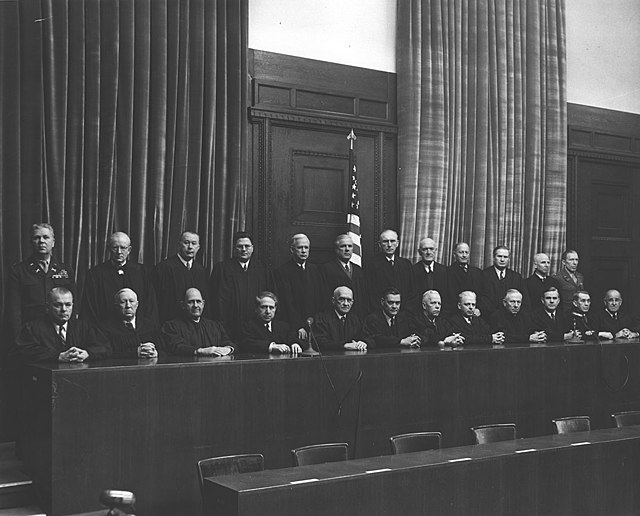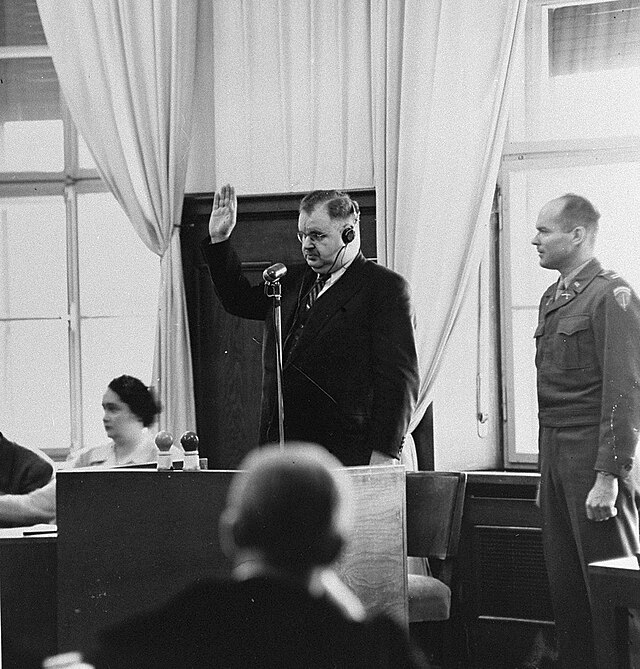Subsequent_Nuremberg_Trials
Subsequent Nuremberg trials
1946–1949 trials of Nazi leadership
The subsequent Nuremberg trials (also Nuremberg Military Tribunals; 1946–1949) were twelve military tribunals for war crimes committed by the leaders of Nazi Germany (1933–1945). The Nuremberg Military Tribunals occurred after the Nuremberg trials, held by the International Military Tribunal, which concluded in October 1946. The subsequent Nuremberg trials were held by U.S. military courts and dealt with the cases of crimes against humanity committed by the business community of Nazi Germany, specifically the crimes of using slave labor and plundering occupied countries, and the war-crime cases of Wehrmacht officers who committed atrocities against Allied prisoners of war, partisans, and guerrillas.[1]
It has been suggested that this article be merged into Nuremberg trials. (Discuss) Proposed since April 2024. |

